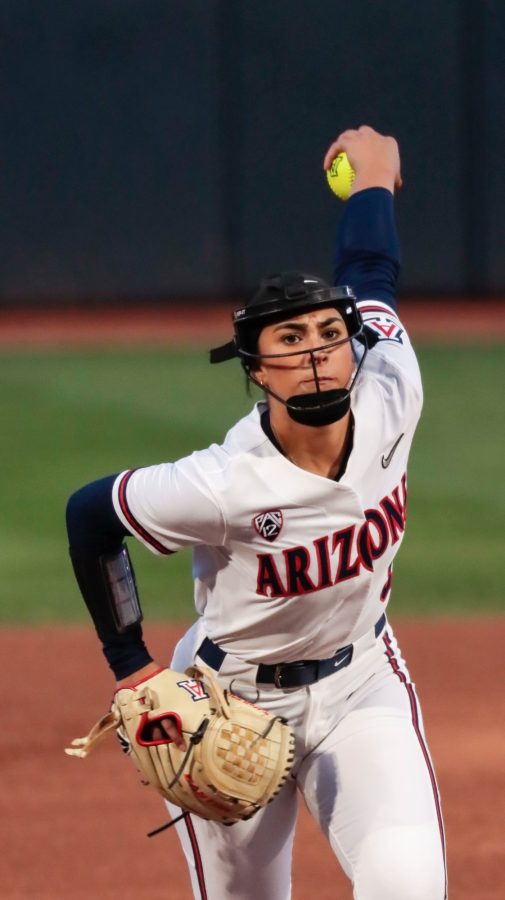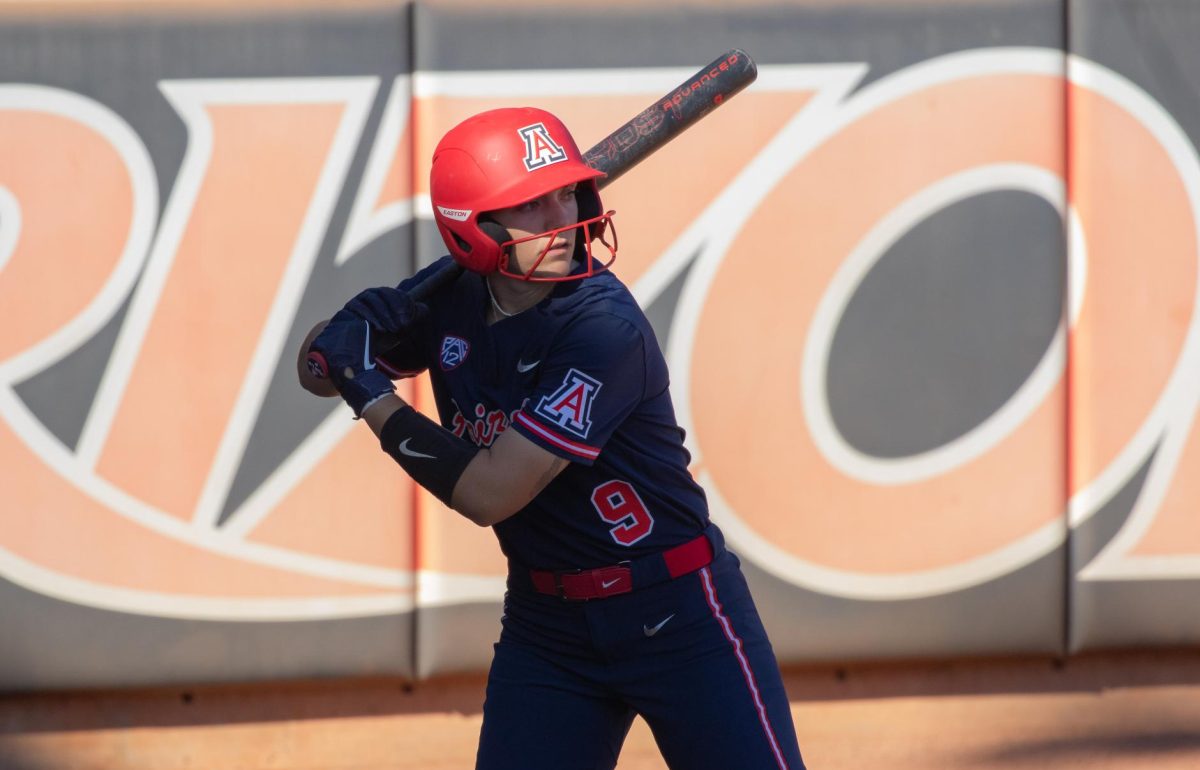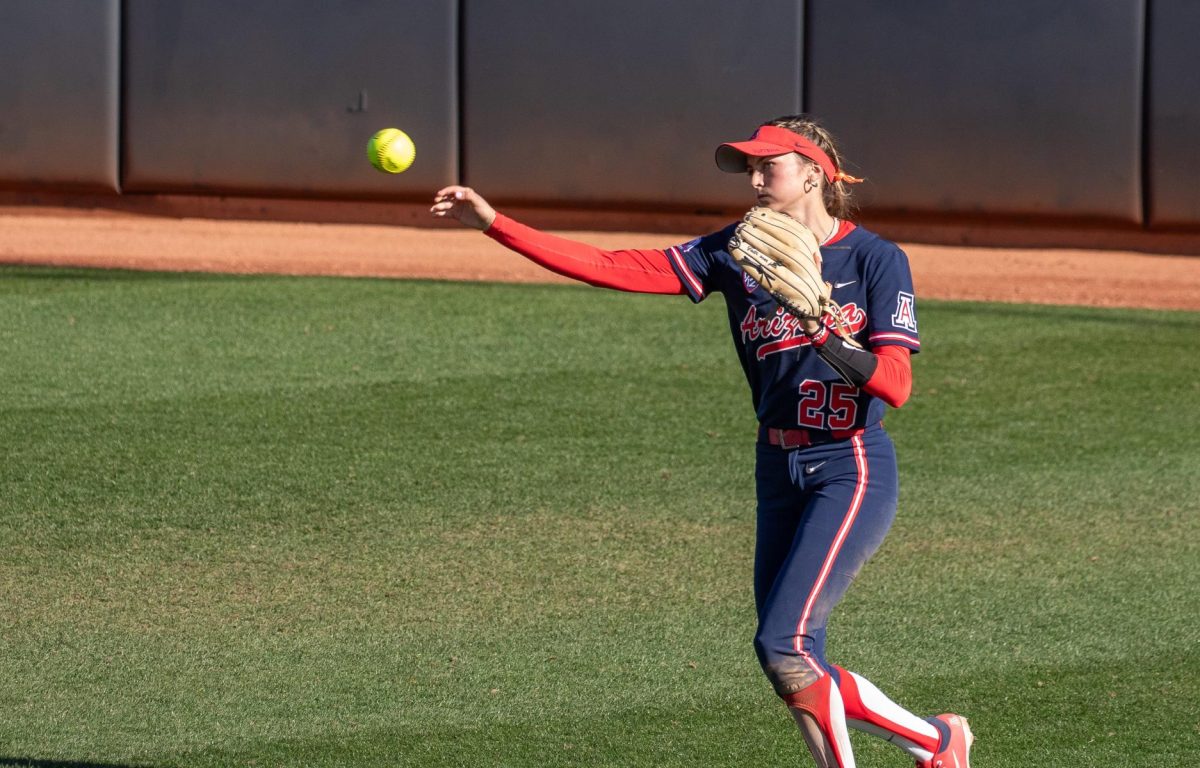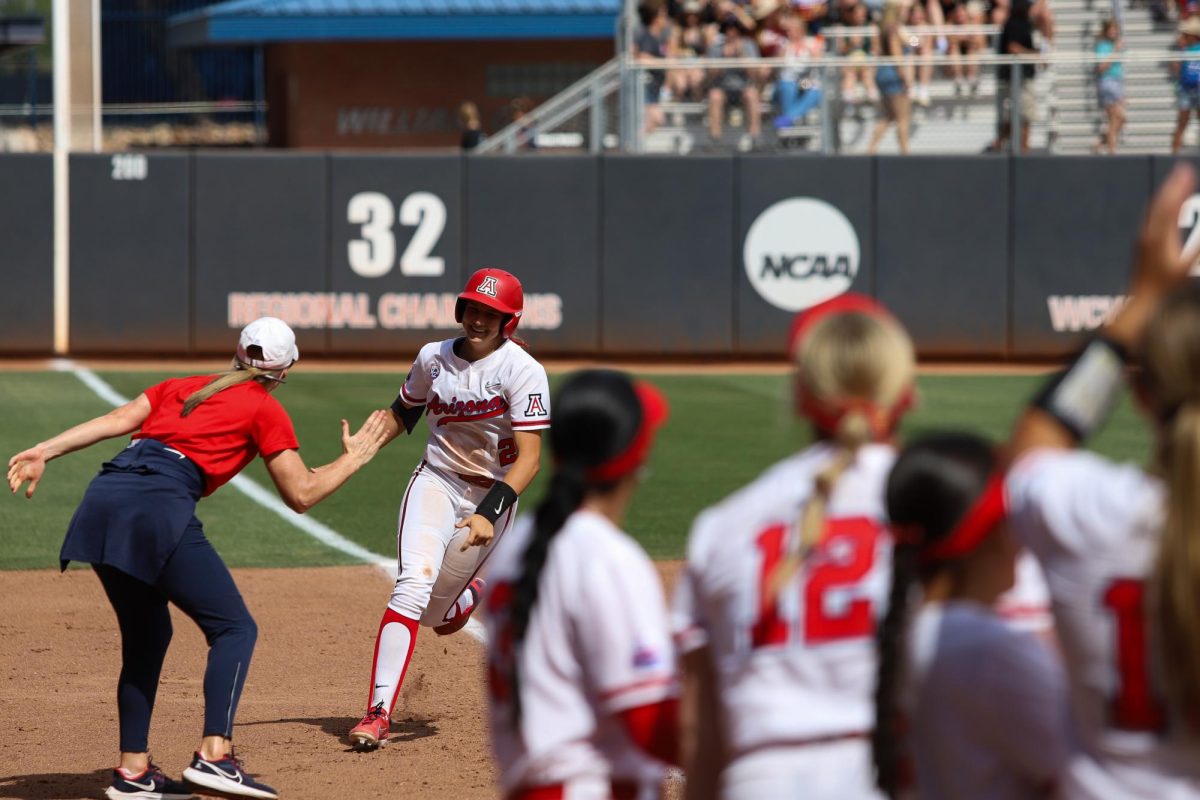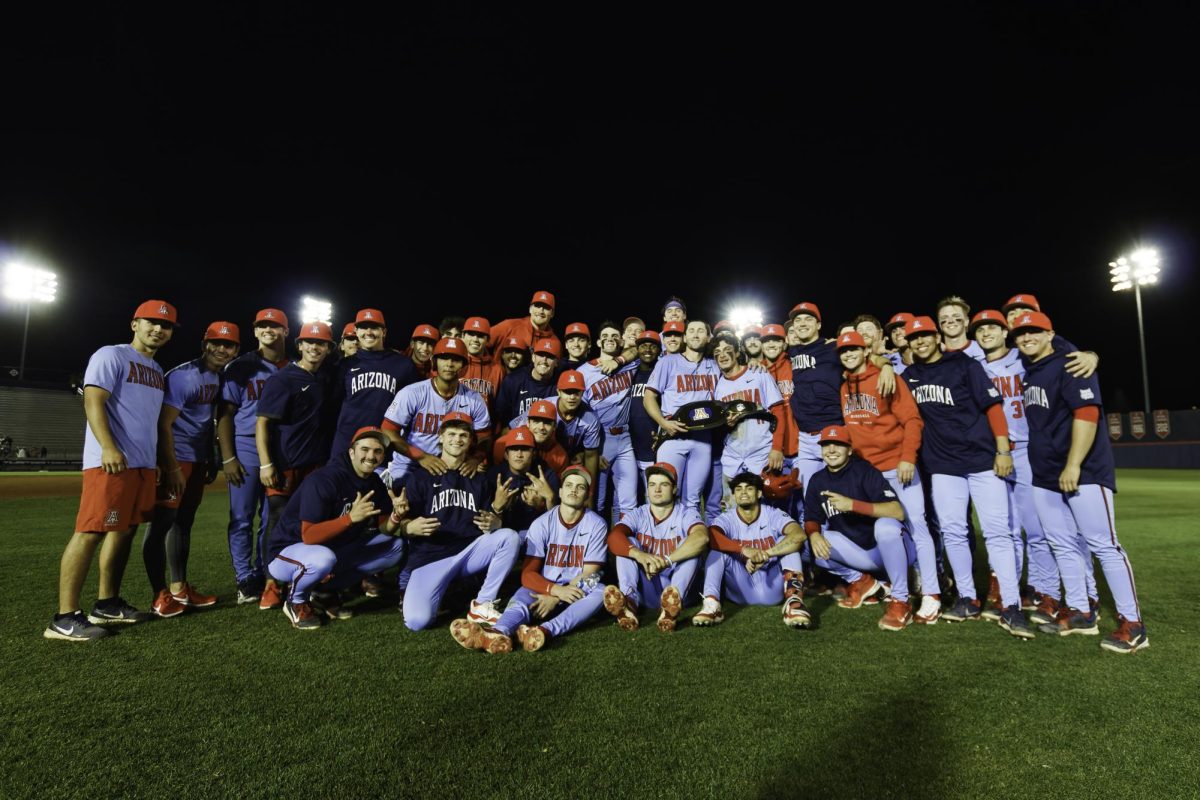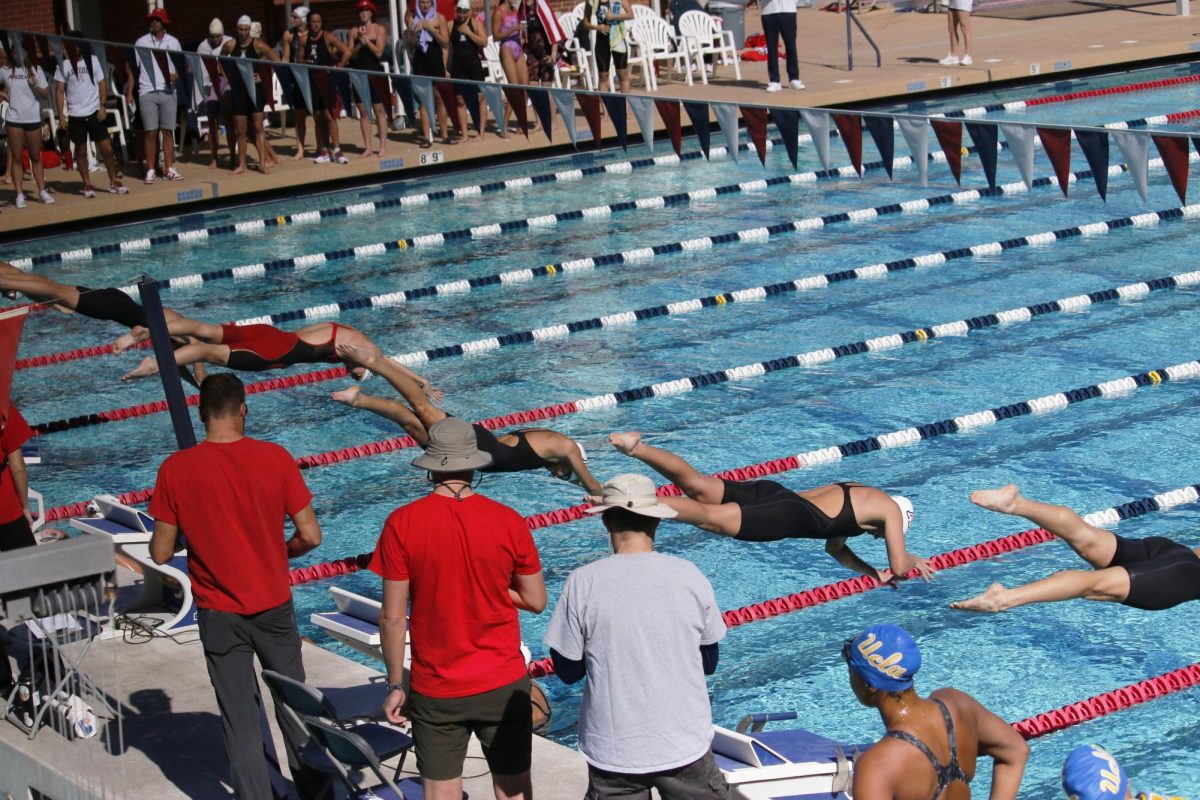With pitching coach Teresa Wilson by his side, Arizona softball head coach Mike Candrea eyed the feet of senior pitcher Sarah Akamine intently for a good 10 minutes as she worked in the bullpen Monday.
Candrea even toed the rubber himself, trying to figure out why Akamine has compiled nine illegal pitches in her last two outings against New Mexico and ASU.
“”We’re working on it a little,”” Candrea said of refining the senior’s pre-pitch movements. “”I don’t know what the trick is. It’s just something (the umpires are) putting a lot of emphasis in this year.
“”I think it’s kind of stupid,”” he added.
At the request of coaches’ surveys, the NCAA made clear that umpires would be watching pitchers more carefully for illegal movements in 2010. At the Judi Garman Classic in mid-March, now-No. 3 Michigan and ace Jordan Taylor were called for 33 illegal pitches in a single game in their match-up with Texas.
The magnified focus on pitching rules has been apparent at Arizona as well. Akamine has been accused of taking her right toe off the rubber before her wind-up, and most of the calls have come when she pitches a screwball. She has given up two runs via balks during the last two games as well.
While she does keep her heel in contact with the rubber, Wilson said Akamine lifts her toe off of it, something that is legal so long as it doesn’t “”break the front plane of the pitching rubber.””
A possible fix would be for Akamine to start further back on the rubber to assure that her toe doesn’t break that plane.
“”I’m not completely sure,”” Wilson, a former head coach at Texas Tech, said of a solution. “”It seems like there’s always a rule that people pay particular attention each season.””
In a March 29 memorandum to all of the Division I softball coaches, NCAA softball secretary rules editor Dee Abrahamson and Kathy Strahm, national coordinator of the Softball Umpire Improvement Program, hoped to clarify the emphasis on the pitching rules.
The goal of the new officiating, according to the document, was to make the flow of the game better.
Instead, the NCAA admitted that the controversy has had “”unintended consequences”” since the flow of the game had been hurt by the increased number of calls.
“”Therefore, in an effort to maintain this point of emphasis and diminish the unintended consequences,”” the memorandum read, “”it has been determined that in applying the pitching rules (Rules 10.2-10.6), pitchers should be given the benefit of the doubt when executing a legal pitch.””
The message appeared to backtrack on the original plan, giving pitchers more freedom and the flow of the game more fluidity after an officiating frenzy at the Judi Garman tournament.
But on Friday against ASU, the officiating hadn’t appeared to give Akamine the benefit of the doubt in the eyes of the Arizona coaching staff.
Candrea and Wilson were still looking for answers Monday.
“”The problem we have is they don’t call it consistently, so you really don’t know (how to fix it),”” Candrea said.
But in the end, the rules won’t conform to Candrea — he knows it’s his job to figure it out.
“”The key is, if they do call it then you have to have a fix.””






